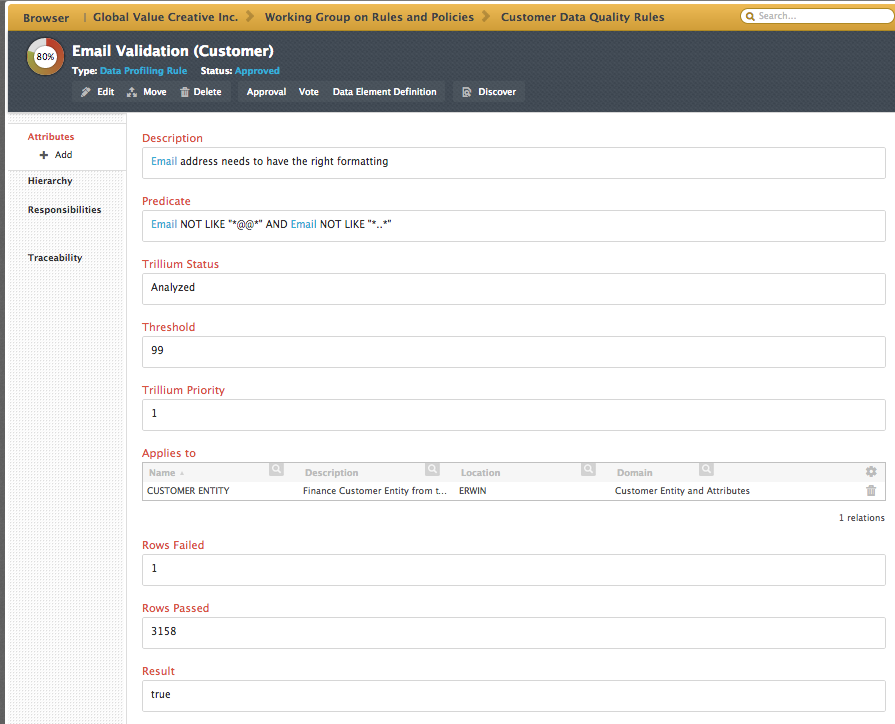Attachments:
- Sample spreadsheet with policies, data quality rules and measurements.
Quick references:
This section gives an overview of the Governance Asset Types that come out of the box with the Data Governance Center 4.6. If you are logged in as a user with sysadmin role, you can browse this part of the Operating Model by going to the Settings menu, and then choose Assignment in the Attributes pane.

The out-of-the-box operating model provides the following Governance Asset Types:
These Asset Types are by default grouped in a special Domain Type, i.e. a "Governance Asset Domain".
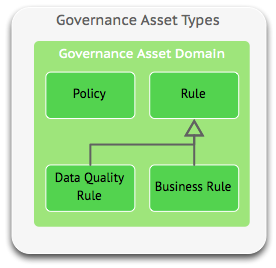
Following diagram shows the default relation types that should set up your Policy- and Rule-driven traceability.
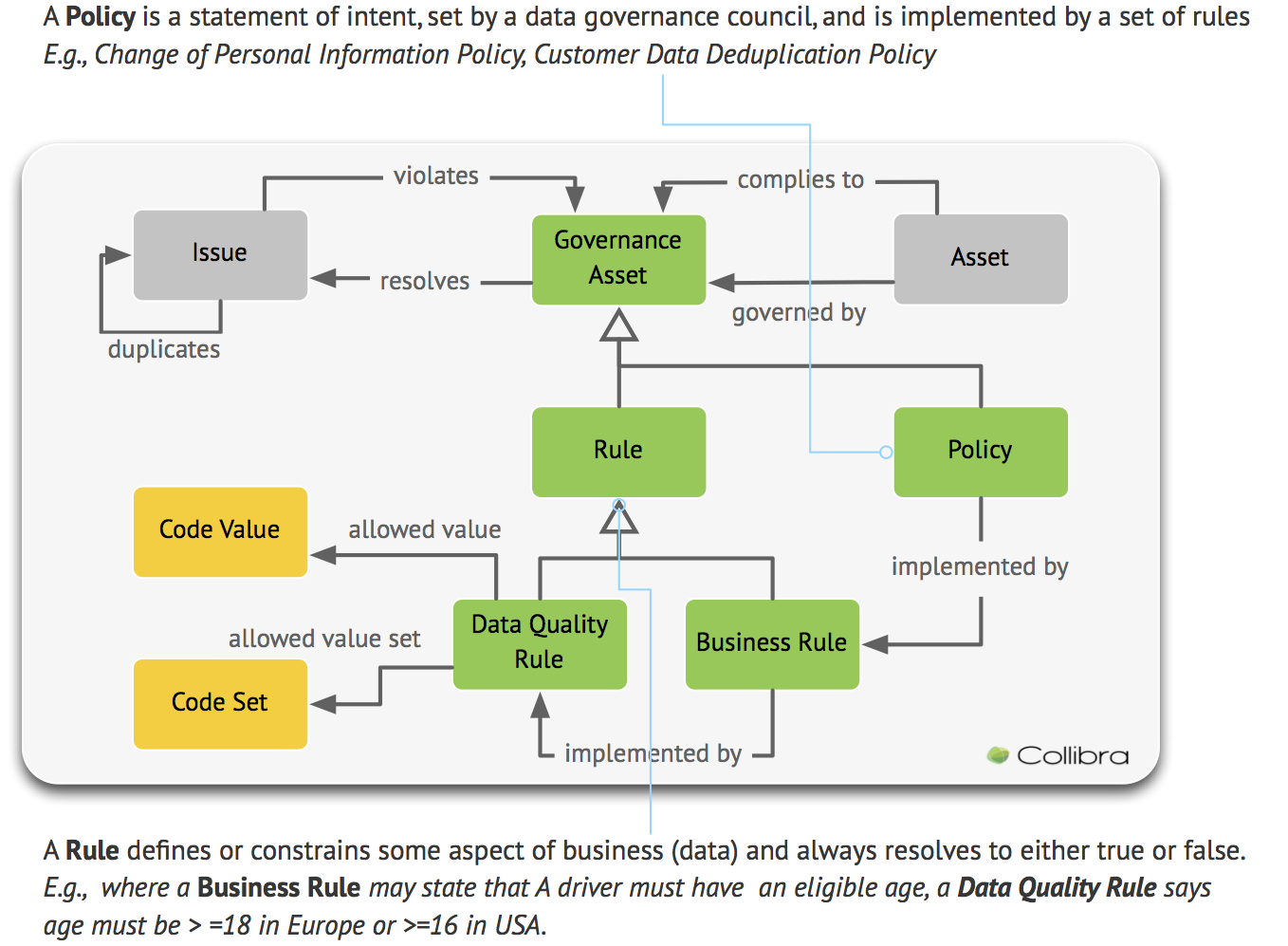
Following is an example of the default attributes for a Policy "High quality rating attributes".
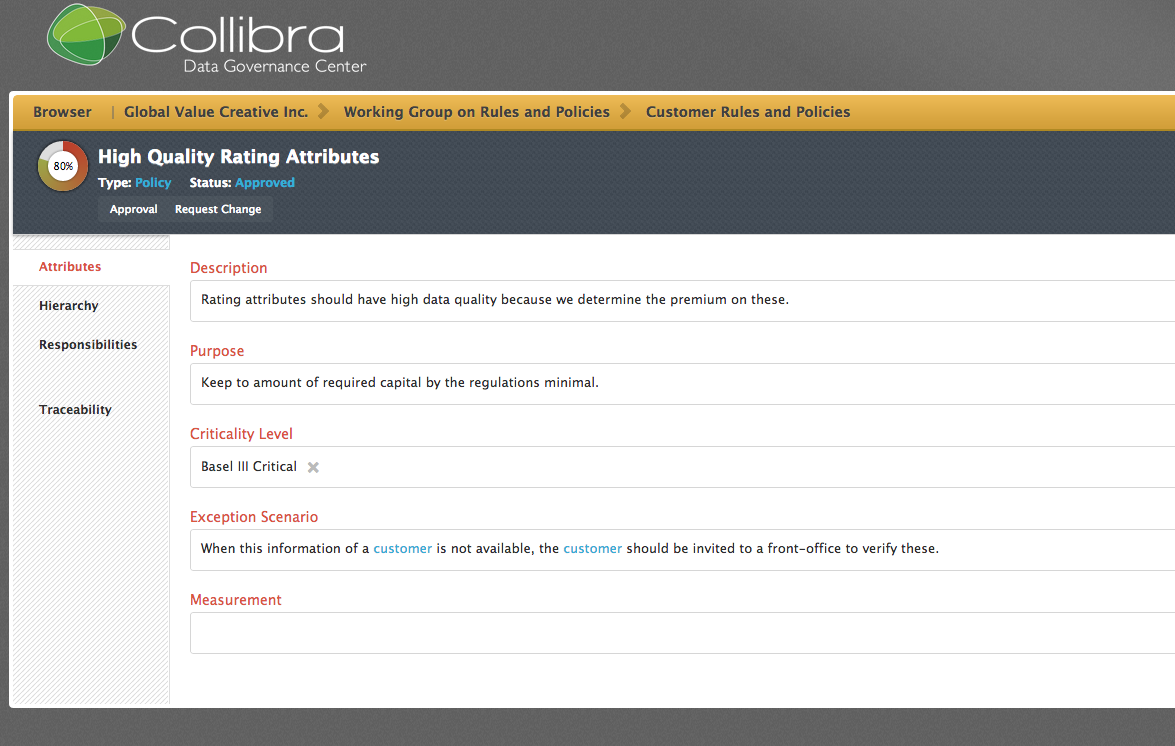
An excerpt of the Policy's Traceability diagram is as follows.
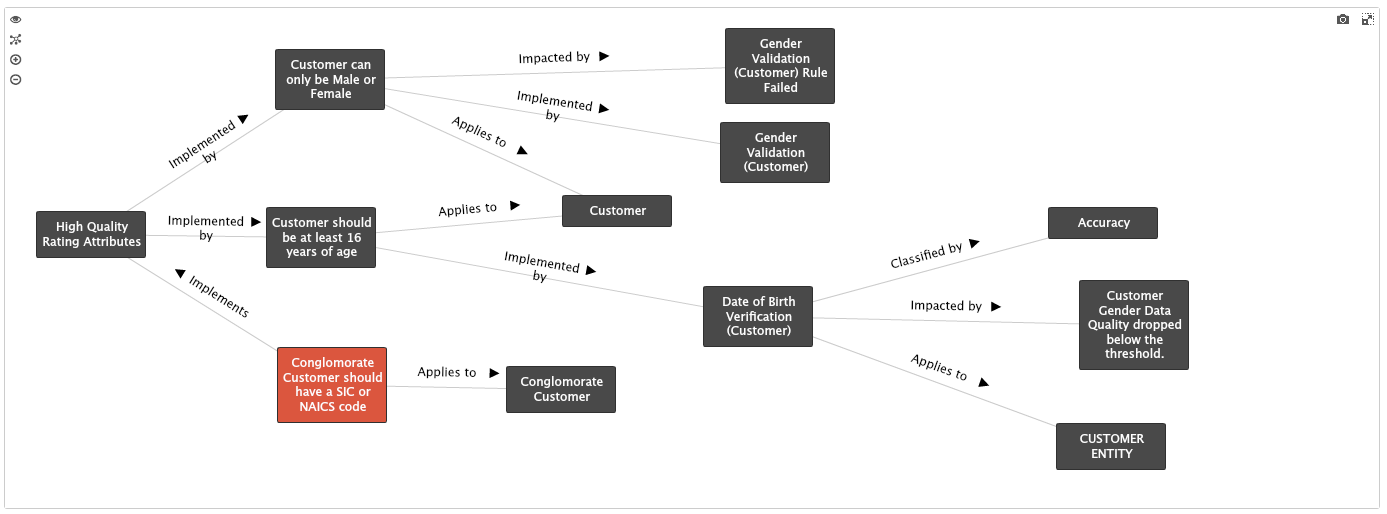
What is a Policy?
Definition and Example
Imagine that Global Value Creative Inc. (our running example) is transforming its product and service offering model. In this context, it is crucial for them to be able to measure the growth of their customer base within this new business model. Customer growth is obviously a key business driver. Hence, monitoring the growth of customer base is a key data Policy.
To measure this Policy, a number of Business Rules have to be put in place and governed as well. The rules implement - hence have semantic relationships - with the Policy.
Recall that Global Value Creative Inc. established a "Working group on rules and policies" Community.

The "Customer Rules and Policies " Domain consists of three Policies which implement in total six Business Rules.

The relationship "implements" is visualized by the Traceability diagram as follows. For example, the Policy "Change of Address in the US" is implemented as follows by two Business Rules, i.e., "State code information should be stored as ISO 3 letter codes" and "Update email information conform business process".
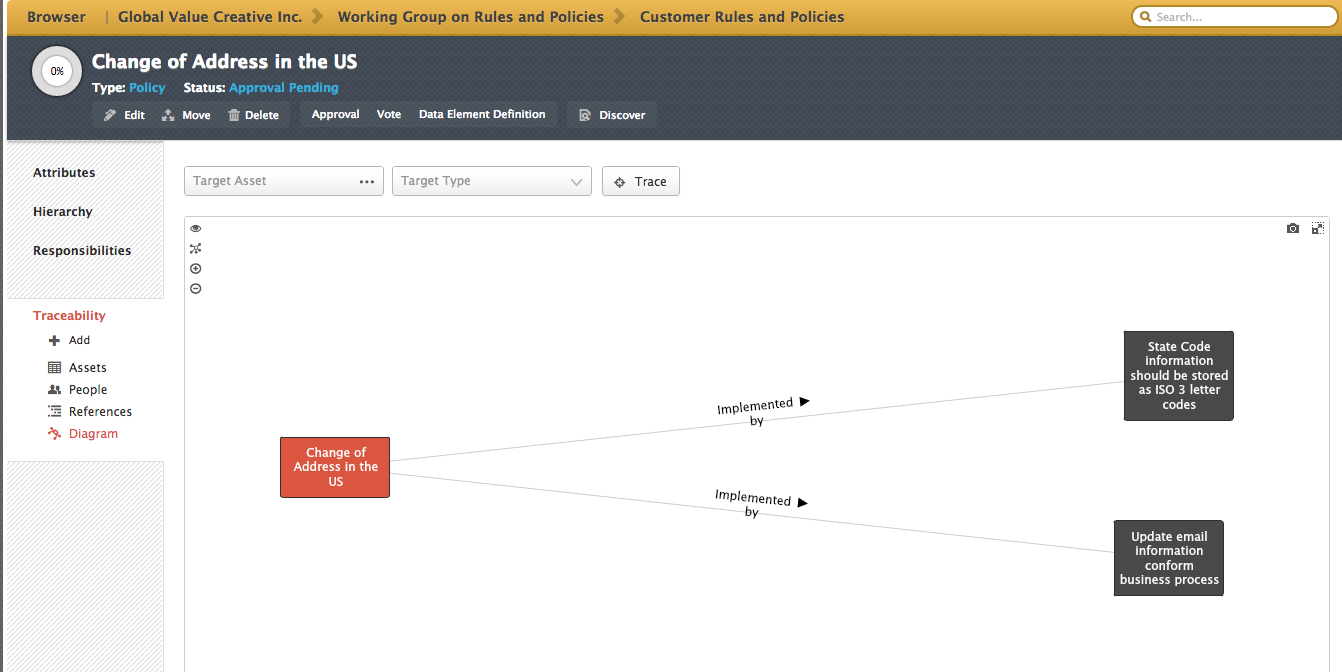
What is a Business Rule?
Definition and Example
For example a business rule might state that no credit check is to be performed on return customers. Other examples of business rules include requiring a rental agent to disallow a rental tenant if their credit rating is too low, or requiring company agents to use a list of preferred suppliers and supply schedules. Note that a Business Rule is qualitative. E.g., the conditions "too low" and "preferred" for the two above examples are qualitative. To know the quantitative meaning of "too low", we have to further decompose a Business Rule into one or more Data Quality Rules.
If we click on the Business Rule "update mail information conform business process", we arrive at its page and can see its attributes and other assets it is related to.
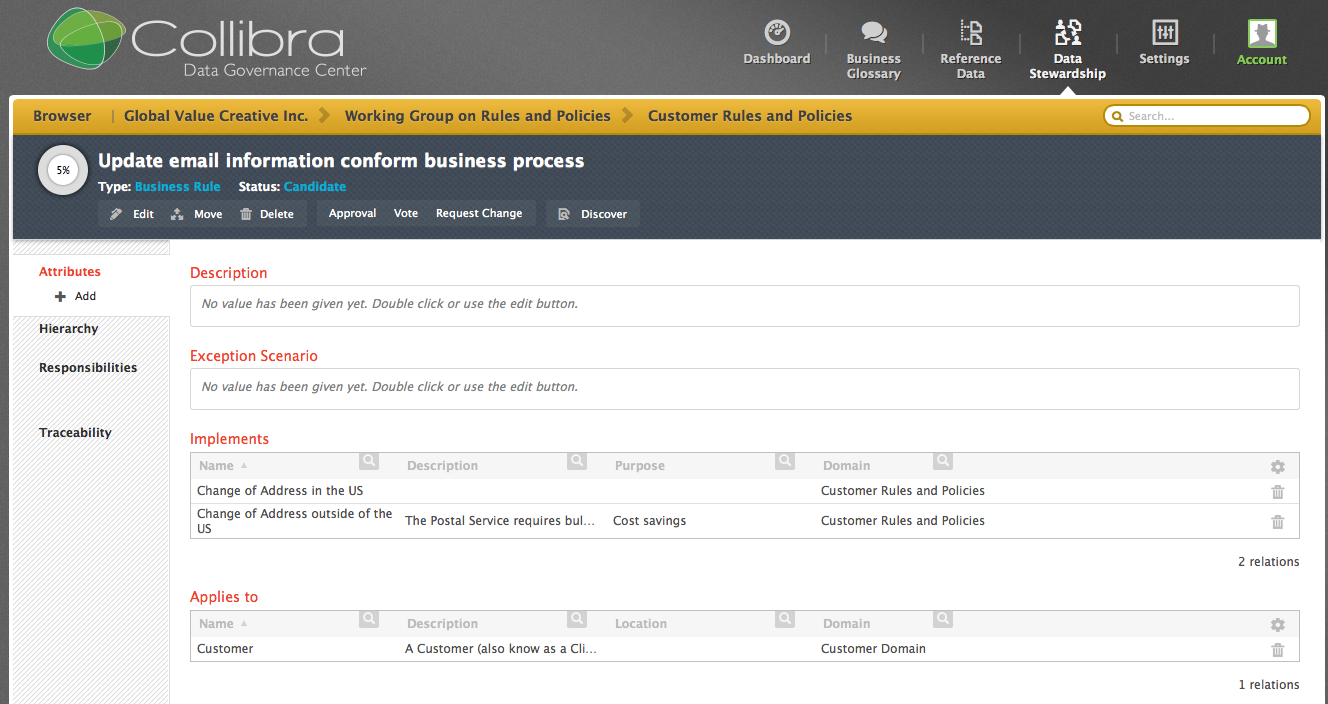
We can see that this Business Rule also implements a second Policy related to "Change of address outside the US". Moreover, it shows an "applies to" relation with the Business Term "Customer" in the "Customer Domain" Domain. The traceability diagram reveils this visually.
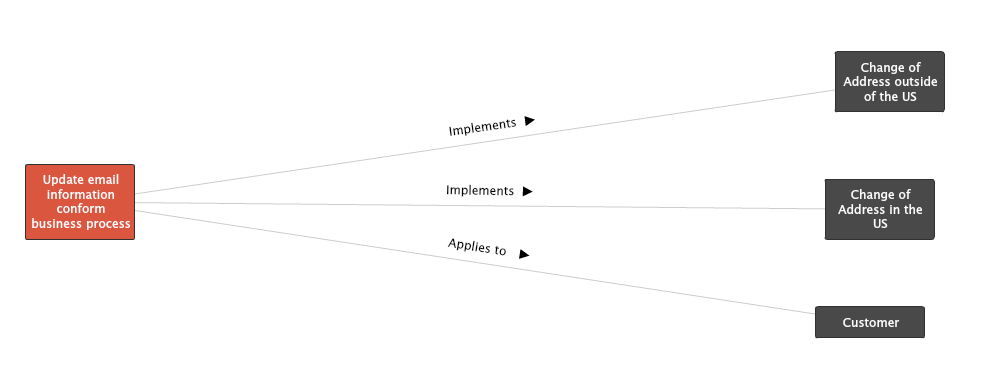
What is a Data Quality Rule?
Definition and Example
The following screenshot shows the six Business Rules that implement our three Policies in the "Customer Rules and Policies" Domain. The table view shows for each Business Rule,how it has been implemented in terms of Data Quality Rules, and to which Business Term it applies to.
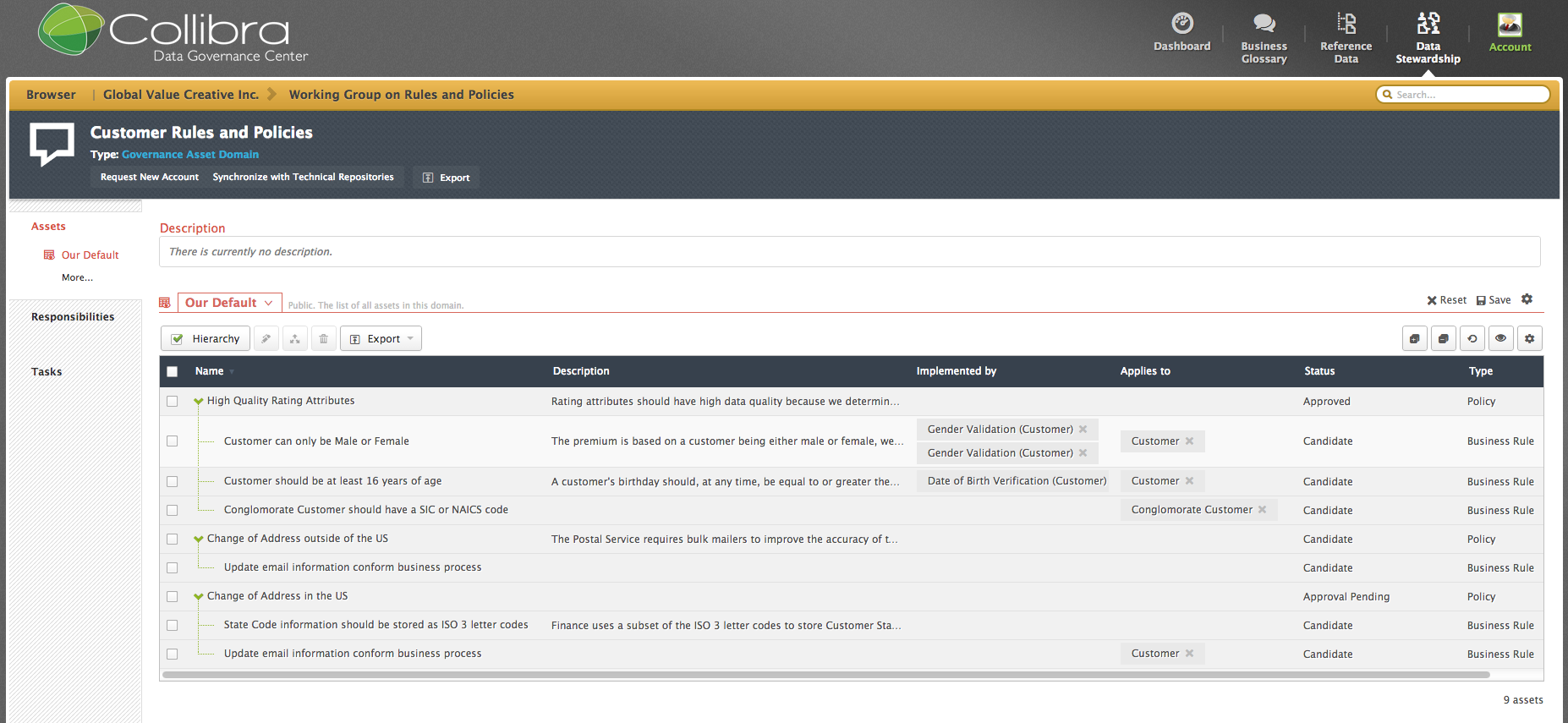
If we browse to the "Customer Data Quality rules" Domain, we can see the set of Data Quality (a.k.a. Data Profiling) Rules. This is shown by the following screenshot. It shows for each Data Quality Rule its predicate.

For example, following screenshot shows the Business Rule "Customer can only be male or female". The condition "male or female" is qualitative. How to evaluate it depends on the information system of database. Therefore, this Business Rule is implemented by a Data Quality Rule "Gender Validation (Customer)". The condition "male or female" is quantified in terms of the predicate "GENDER IN ('M' or 'F')". The predicate format is usually specific to the data quality profiling tool's rule syntax.
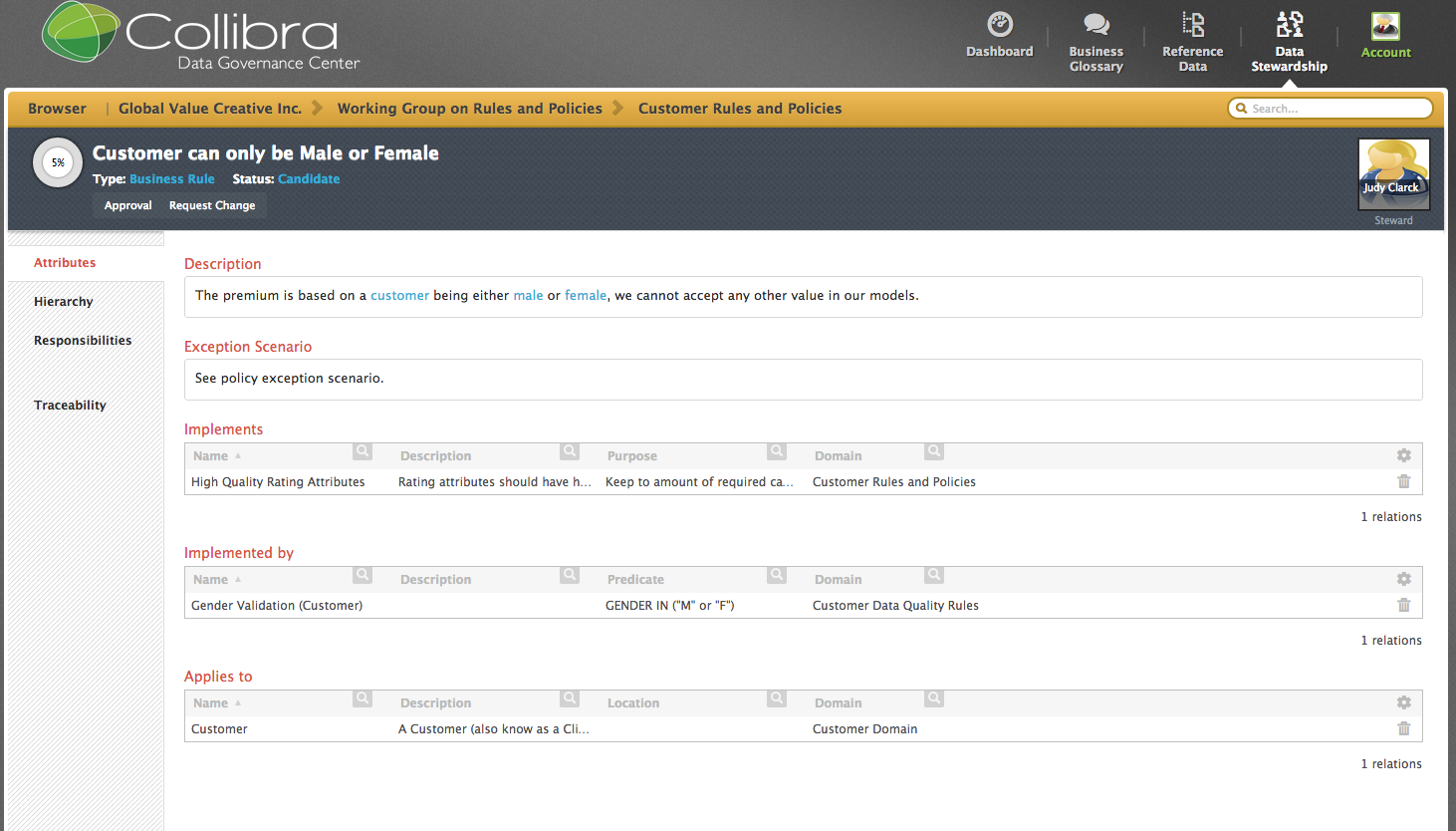
The Data Quality Rule's Traceability diagram shows its "applies to" relation with Business Term "Customer", its "implements" relation with Business Rule "Customer can only be male or female", the latter which implements the Policy "High quality rating attributes".
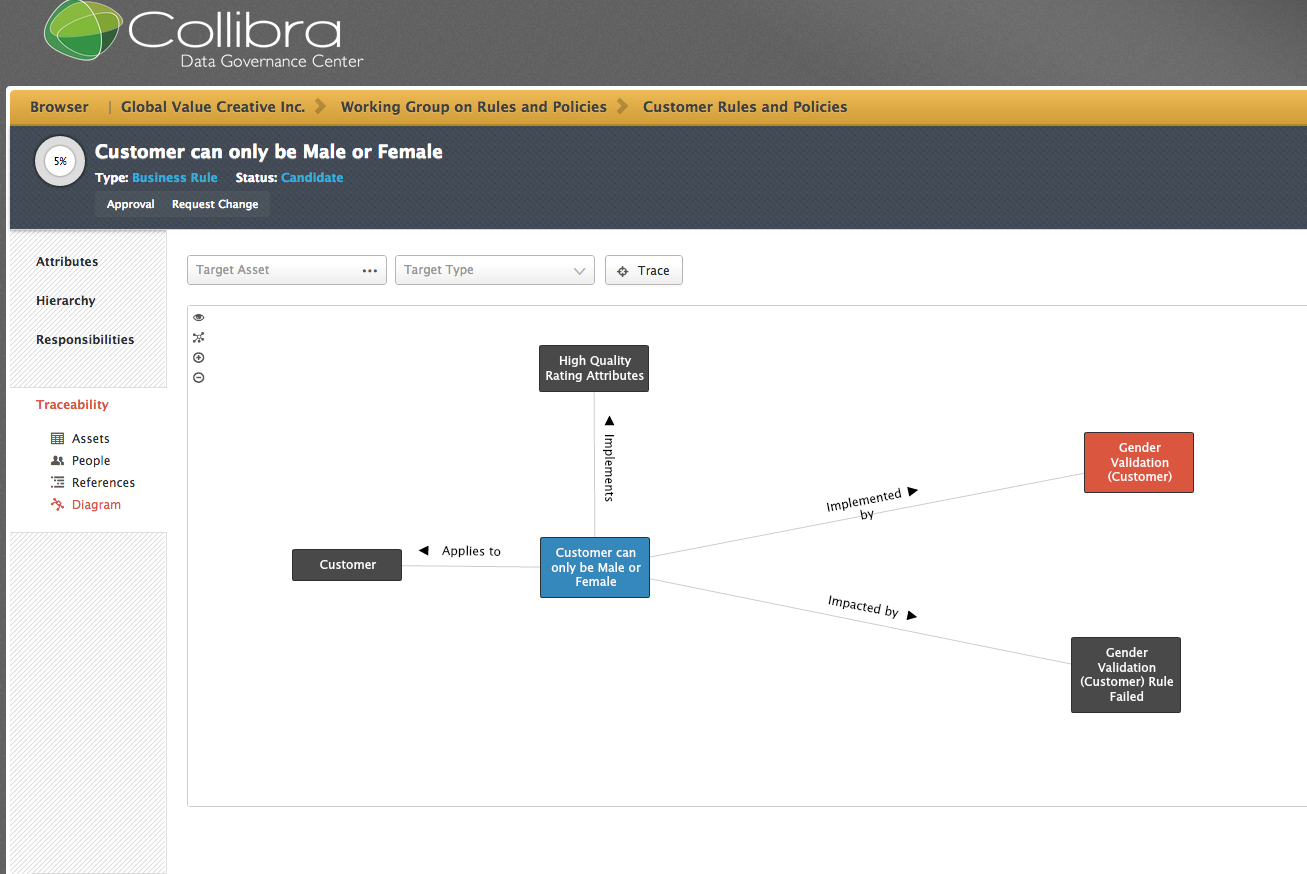
One of these Data Profiling Rules to check the formatting of email addresses is defined as follows. Attributes such as rows failed and rows passed were loaded from a data quality profiling tool.
